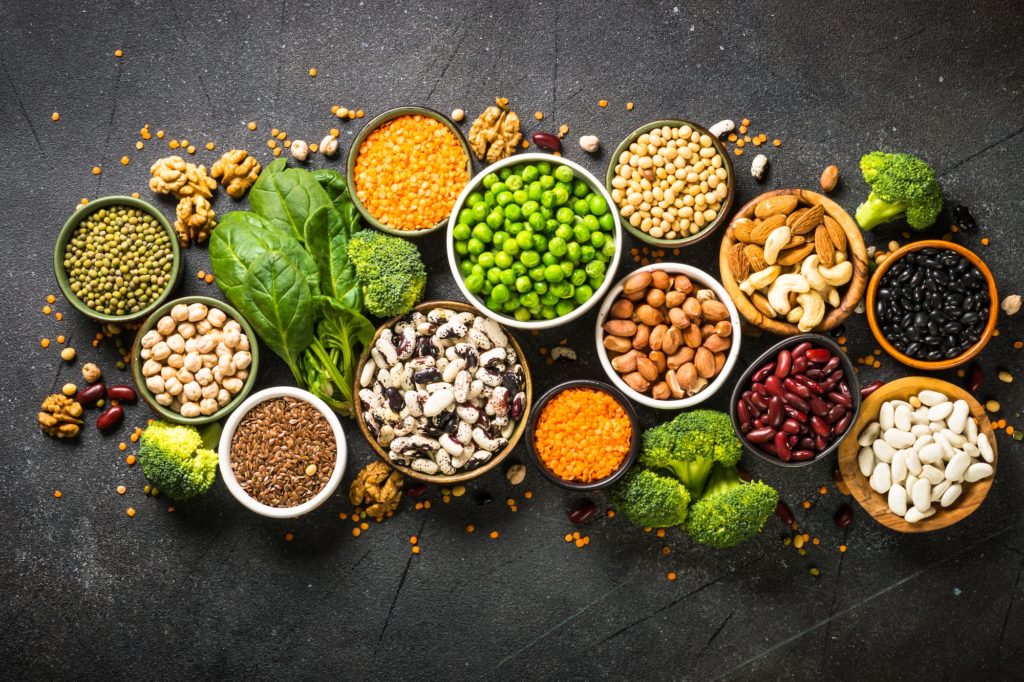OK, so I’m used to “meat protein” – where does one get all that vegetarian protein?
That, to me, seemed to be one of the more daunting things. I’m doing vegetarian, not vegan, so it’s a bit easier. But, wanting to put in muscle mass and lose fat (not necessarily at the same time – weight is the higher priority) does make it a little more interesting.
I don’t really care for beans that much. I mean, they aren’t horrible, but they aren’t that great either. Refried beans (vegetarian – regular refried beans use lard) are a bit better than just straight beans, but still not a favorite. I keep hearing that beans are the best source…. but what else is there?
Probably the first thing I need to figure out is: how much protein do I actually need per day? Counting calories and carbs isn’t uncommon for me – I had been trying to get my blood sugar under control and eating a diabetic diet (and at one time, cooking for a diabetic), so that’s not too hard. But most of the time, when it came to proteins it’s a simplified system: a piece of lean meat about the size of your palm is enough for most meals when eating to keep Type II Diabetes in control. Since I’m not eating meats, I already know from my short experience that meat replacements are all over the board when it comes to actual protein (one patty I had was 5 grams of protein, one Beyond patty is 19 gram – huge difference)
But, what if you’re trying to lose weight? Or trying to work out and gain some muscle mass? Well, come to find out, those two number are fairly similar. 1 gram per pound ya’ weigh (with an asterisk here: I’ve also seen it’s 1 gram per pound of your GOAL weight, but since part of the reasoning you’re eating that much protein is to make you feel full longer, and maintain energy without as heavy of a reliance on carbs, it doesn’t make much sense that it would be the goal weight rather than current weight.) So, I need around 220 grams of protein.
That’s a fuckton of protein. If I were eating steak, it would be the equivalent of eating 38 oz of steak a day to hit that level. Or, 11 Impossible burgers if I go with the no-meat version. Of course, we’re talking spread out over around 5 meals a day (the 3 ‘normal’ and 2 snack meals in between), and some veggies have plenty of protein. But, it really is quite a bit 🙂
One thing that occurred to me is I could just use workout protein concentrate to make up whatever protein I don’t get. Which then got me to thinking: why spend money on ’em when most of them are whey protein anyway? I did a cost-per-gram of protein breakdown, and come to find out cottage cheese was probably a better choice. Added bonus: cottage cheese doesn’t taste like chalk with delusions that it’s tasty.
Having a baseline for cost for non-animal proteins (which, currently, is cheaper than beef in most cases), I started exploring. Lots of variations of stuff like beans, so I’ll just have to make peace with liking beans 😉 I’ll admit that some of them, like hummus, I really do enjoy. Then there’s tofu, which has decent protein, but I really don’t care for it.
Then I started getting into more “exotic” stuff. And, by exotic, I mean I’ve never heard of it before, not that it’s REALLY that exotic. 😉 Tempeh has more protein per oz that quite a bit of the stuff I’ve looked at, but not a whole lot of it at the grocery story and it’s cost per oz of protein was a bit high. Then there was stuff like seitan, which SOUNDS cool: it’s used as a meat substitute, and it blows pretty much everything away at 21 g of protein per Oz. Not bad! Also I can make it at home! Very cool! And it costs…oh. OK, see, that’s why I’m not seeing it in store: that stuff is expensive because of the vital wheat gluten used in it.
So, yeah, lots of options: some of them are boring, and some of them are really expensive 🙂 But, even with what I wrote up there, it’s more varied than that: broccoli, cauliflower, corn, all of those contain protein. (Green peas contain lots of protein. However, green peas are those things you hide under your napkin when served them, so they don’t contribute much usable protein.) So, with planning, it’s pretty workable. Interesting to note that even when eating meat, I probably wasn’t really hitting that 1 gram per pound setpoint anyway – that was never the part I hadn’t worried about previously.
Fortunately, there’s some apps to help track all of that, which is good: as you might imagine having read this, the protein game when eating vegetarian is definitely very different than what I’m used to.


Your posts offer valuable insights.